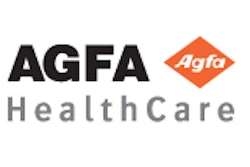The potential for computer-aided detection (CAD) technology to improve lung cancer detection may get a significant boost with the launch of the National Cancer Institute (NCI)-sponsored Imaging Database Resources Initiative (IDRI).
Utilizing the infrastructure of the $7 million, NCI-funded Lung Image Database Consortium (LIDC) and $1.2 million in supplemental donations from eight imaging equipment and CAD vendors, the IDRI will expand the consortium's lung CT database by 150%, as well as create a new database of chest radiographs. It may also facilitate the introduction of new chest CAD software tools, according to industry and academic experts.
"IDRI's 36-month demonstration project utilizes private-sector funding to augment an NCI cancer imaging program grant to create a model database," said Dr. David Yankelevitz, a professor of radiology at New York-Presbyterian Hospital/Weill Cornell Medical Center in New York City. "This sets a precedent that ideally will be replicated in future initiatives. It will allow for meaningful comparisons of different CAD methods, identify the ones that are most promising, and potentially reduce software development costs."
Yankelevitz spoke about the program during a hot topic presentation at the 2005 RSNA meeting in Chicago.
The LIDC was launched by the NCI in 2001, and thoracic imaging experts at five academic medical research institutions worked together to develop consensus guidelines for a spiral CT lung image standardized database that addresses the issues of database design, accessibility, metrics, and statistical methods for evaluating image processing algorithms. The consortium's second objective was to create a database of 400 lung CT examinations using these guidelines.
The major motivators for funding the LIDC are the increasing use of CT for lung imaging and the enormous amount of data generated for analysis, said Laurence Clarke, Ph.D., chief of the imaging technology development branch of NCI's Cancer Imaging Program.
"The sheer number of images being generated in a thin-slice spiral CT study is making it extremely difficult for radiologists to look for small nodules in every image," he said. "CAD is needed as a practical necessity. One hindrance to CAD development has been the lack of a high-quality, ground-truth, standardized database. Our second motivator is to provide that database."
The criteria and protocols of the program were described in an article published in the September 2004 issue of Radiology (September 2004, Vol. 232:3, pp. 739-748).
The LIDC project is near completion, with the database of 400 cases anticipated to be available for public research use in the third quarter of 2006. With the LIDC infrastructure and team of experts still intact, industry is paying for the IDRI, which will add 600 lung CT examinations as well as 300 cases of chest radiographs that are correlated with 300 of the CT studies.
While lung CT may soon be recognized as the gold standard screening examination for early lung cancer detection, chest radiographs are globally utilized, significantly less expensive, and are still the most commonly used imaging procedure to detect lung cancer nodules. The 900 additional image sets collected by the IDRI will be made available for public use to the international research community in October 2009.
The impact of this precedent-setting joint initiative by academic researchers, government agencies, and vendors could be huge. Lung and bronchial cancer is the leading cause of death in the U.S. and many other countries. Cancer detection and treatment in its earliest stages improve the odds of survival, and CAD algorithms simplify the task.
Clarke said that because the LIDC was structured for expansion, it was easy to create the IDRI as a partnership of government agencies and professional organizations with vested interests, including the Foundation for the National Institutes of Health (NIH), NCI, Food and Drug Administration (FDA), National Electrical Manufacturers Association (NEMA), the National Institute of Standards and Technology (NIST), and the RSNA. Industry participants included Agfa HealthCare, Eastman Kodak Health Group, Fujifilm Medical Systems USA, GE Healthcare, iCAD, Philips Medical Systems, Riverain Medical, and Siemens Medical Solutions. The university consortium comprises Cornell University; the University of California, Los Angeles; the University of Chicago; the University of Iowa; and the University of Michigan.
Considerable expense and effort are expended by vendors in the acquisition and markup of proprietary MDCT lung datasets, said Marcos Salganicoff, Ph.D., chairman of the IDRI Industry Participants Group and senior staff scientist and program manager for Siemens' computer-aided diagnosis and therapy division.
"By pooling vendor resources and leveraging the predeveloped knowledge and infrastructure of the LIDC, the IDRI provides a way toward a more efficient and scaleable creation of databases," he said. "Industry plays a very important role in that we have insight into trends for image acquisition and CAD technologies. We provide an alternative perspective."
Common datasets tend to stimulate competition and innovation, because technology developers can focus more on technology development and less on data collection and markup, Salganicoff said.
Other advantages include the ability to acquire images from different scanner types, an optimized selection of images, consistent marking and characterization of nodules, and interpretation by a consensus of expert specialists, said Alessi Vande Casteele, an applications specialist at Agfa HealthCare.
"As industry partners, we strive to see the creation of a robust database for algorithm testing that contains an even variety of all different kinds of nodule size, structure, and location," she said.
The database that IDRI will create will allow the R&D community to compare how well their software is working against the performance of other software initiatives, New York-Presbyterian Hospital's Yankelevitz said.
"Because FDA representatives participate at the IDRI meetings, the database design has incorporated FDA recommendations and may expedite the 510(k) or premarket approval process," Yankelevitz said. "Our goal is to get CAD tools that assist us to diagnose early lung cancer faster and better, and to more intelligently utilize diagnostic imaging modalities."
By Cynthia Keen
AuntMinnie.com contributing writer
March 16, 2006
Related Reading
Low lung cancer detection rate seen in Dutch/Belgian study, March 3, 2006
CT screening identifies curable lung cancers, February 14, 2006
Value of low-dose CT for lung cancer screening still uncertain, January 10, 2006
NCI's caBIG imaging group to hold first meeting, December 12, 2005
Management strategies evolve as CT finds more nodules, August 19, 2005
Copyright © 2006 AuntMinnie.com



















